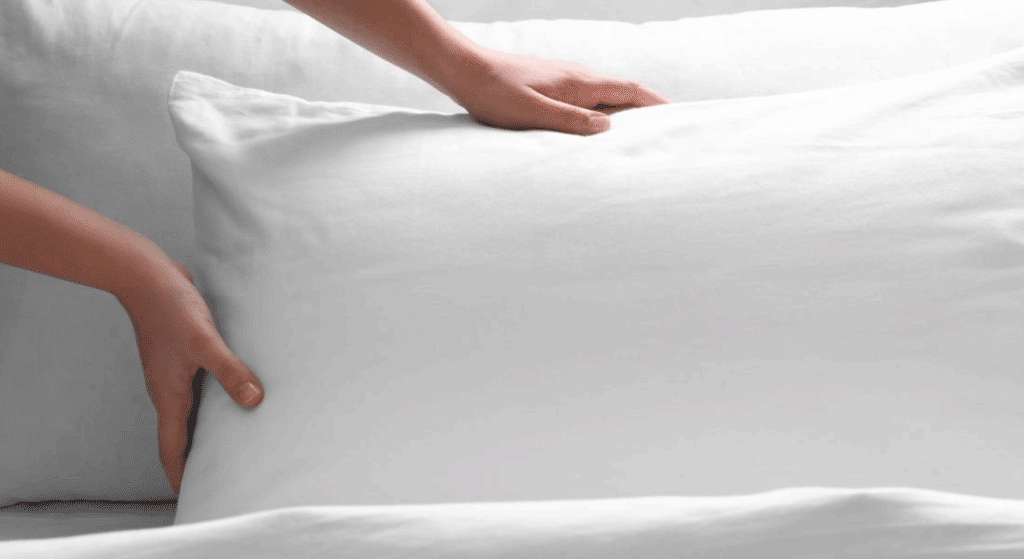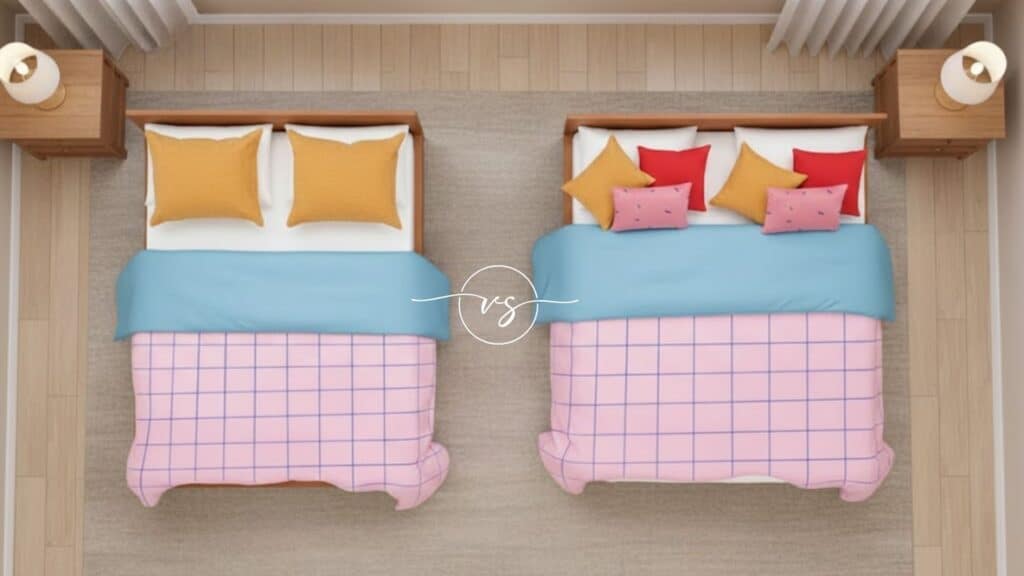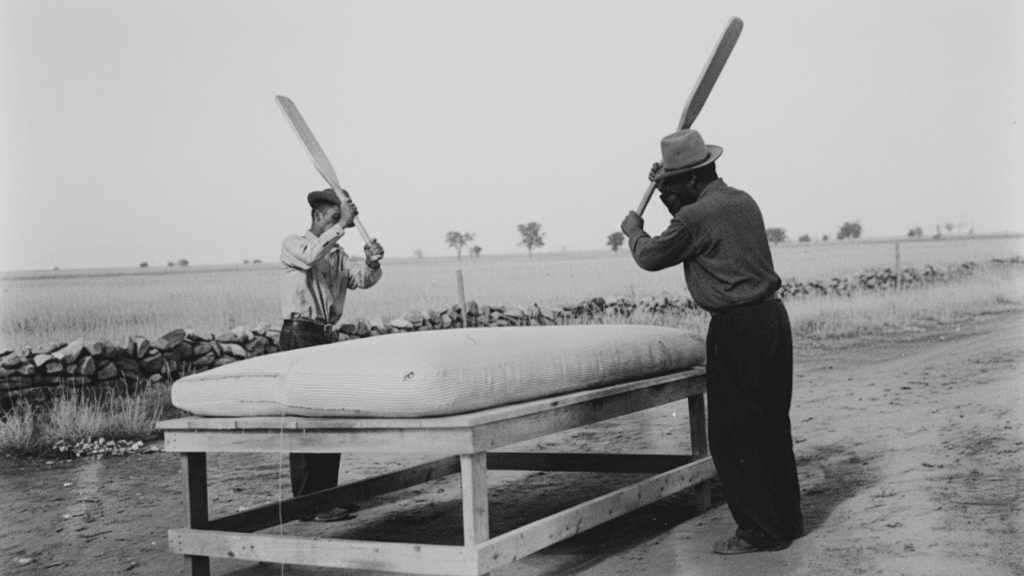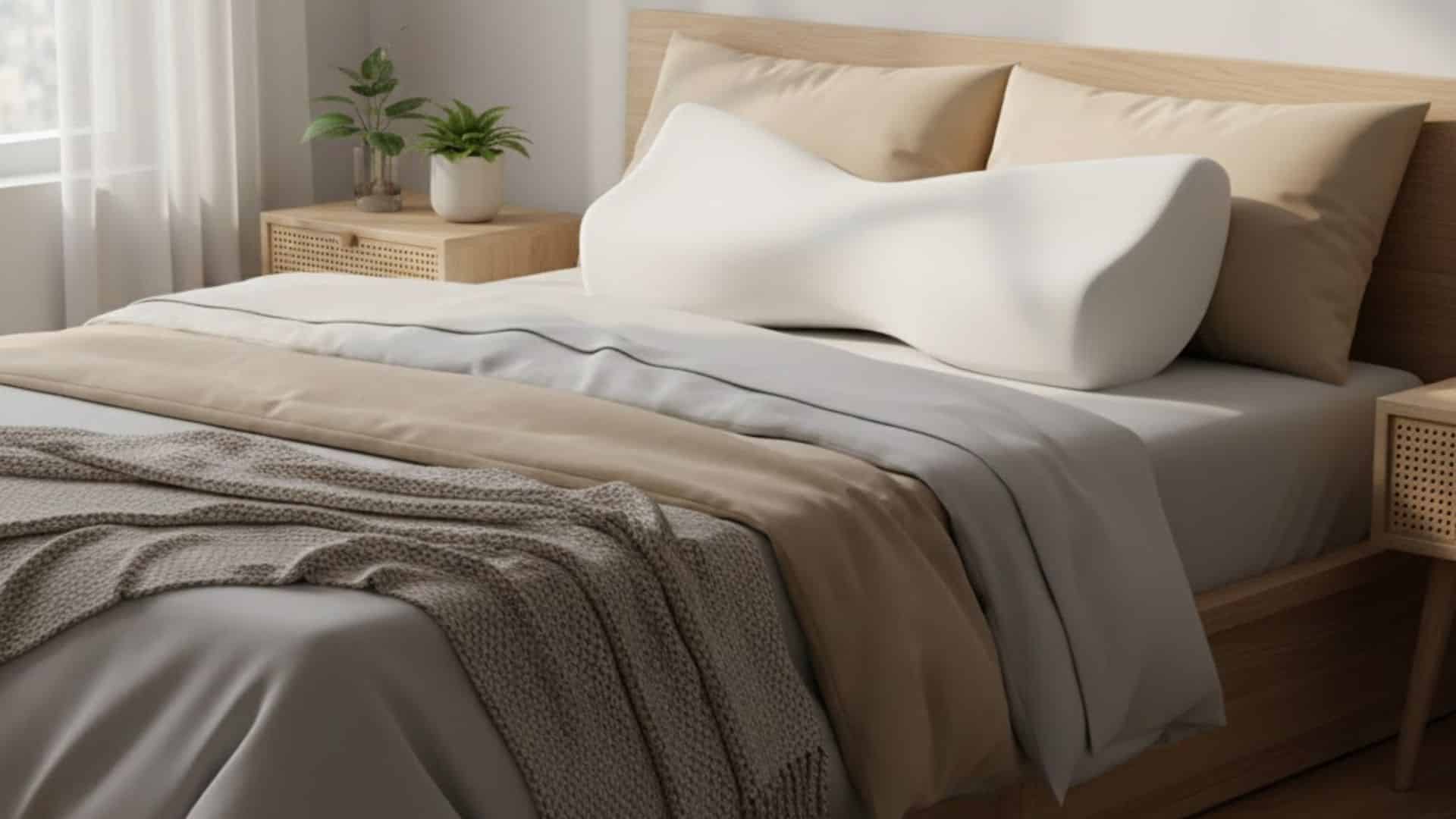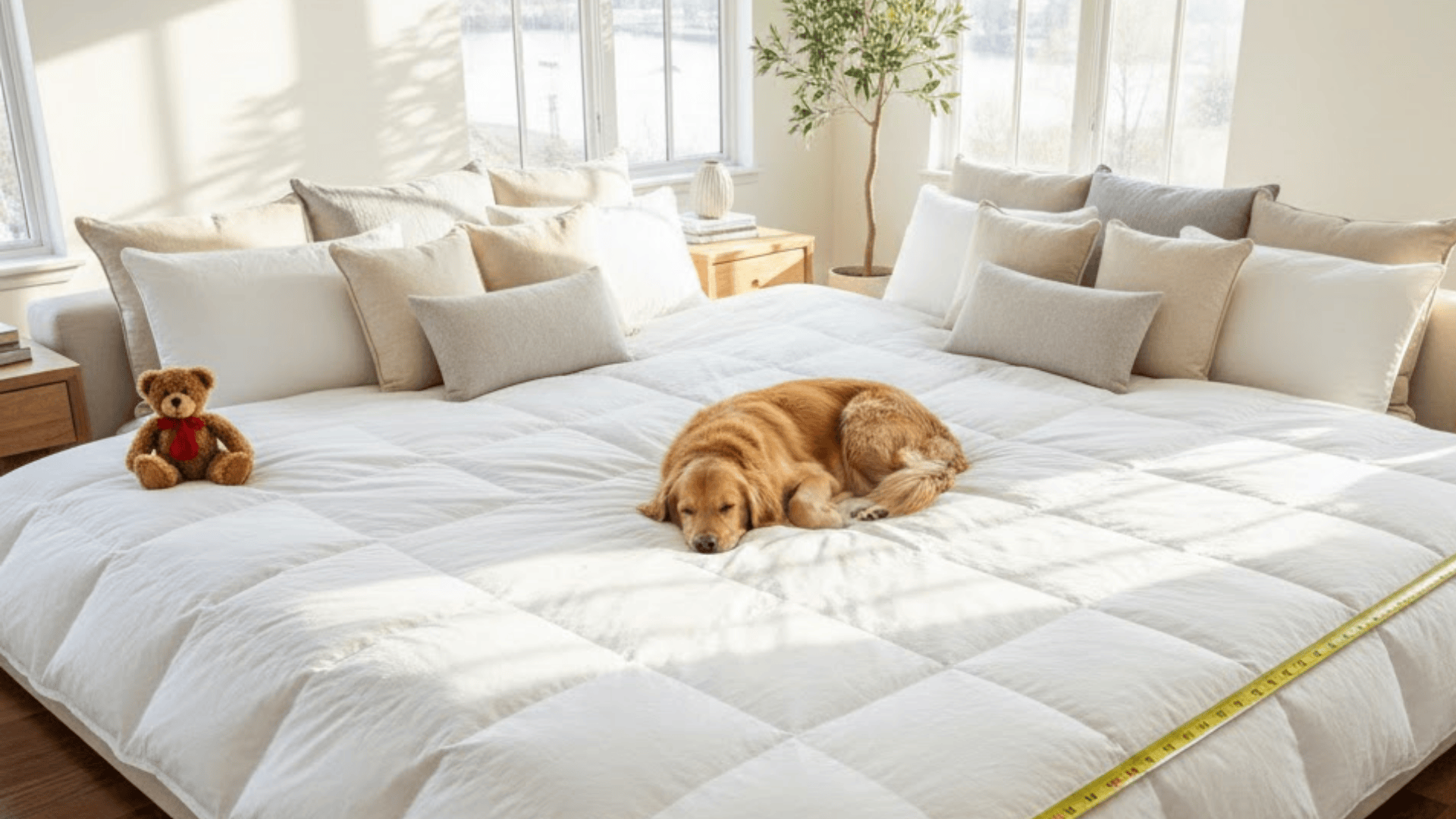Ever wake up and feel like your pillow just gave up overnight? I’ve been there, and one day it feels soft and full, and the next it’s flat, lumpy, and just not doing its job. I started looking into how to fluff a pillow when mine stopped bouncing back, even after a good shake.
What I found were a few simple ways that actually work, without needing special tools or buying a new one right away.
In this guide, you’ll learn the easiest ways to bring your pillow back to life: by hand, in the dryer, or even by setting it in the sun. You’ll also see how different pillow types need different care, when it’s time to replace yours, and how to keep it fluffy longer.
If your pillow has lost its shape, this will help you fix it fast.
Why Pillows Lose Their Fluff Over Time
Pillows go flat mostly because of daily use. Every night, when you lie your head down, the weight slowly presses the filling inside. This pressure squeezes the pillow over time, making it less puffy.
Moisture is also a big reason. When we sleep, we sweat. Even just breathing adds moisture to the pillow. This dampness sticks around inside, especially if the pillow doesn’t dry properly. Wet filling clumps together, which makes it feel flat and uneven.
Washing and drying can also cause problems. If a pillow is washed too often, or not dried all the way, the filling can bunch up. Using high heat or not shaking it out while drying can ruin the shape.
So, even if your pillow is clean, it might not stay fluffy if it’s not cared for the right way.
All these things: pressure, sweat, and cleaning mistakes work together to make your pillow lose its fluff.
Signs Your Pillow is Worn Out for Good
Sometimes, no matter how much you fluff, shake, or wash a pillow, it just doesn’t feel right anymore. That’s because it’s likely past its best days. Here are some clear signs that your pillow needs to be replaced:
- It stays flat even after fluffing
- You fold it in half and it doesn’t spring back
- There are lumps that won’t go away
- It has a bad smell, even after washing
- You wake up with neck or shoulder pain
- There are yellow stains or too much sweat buildup
- It’s more than 2 years old (for most pillow types)
If you notice one or more of these signs, it’s a good idea to stop refluffing and start shopping for a new pillow. A fresh one can help you sleep better and wake up without aches.
How to Fluff a Pillow: Easy Methods That Work
Here are some methods that work for most pillow types. These tricks can help make your pillow soft, full, and comfy again, without buying a new one:
1. The Accordion Method (By Hand)
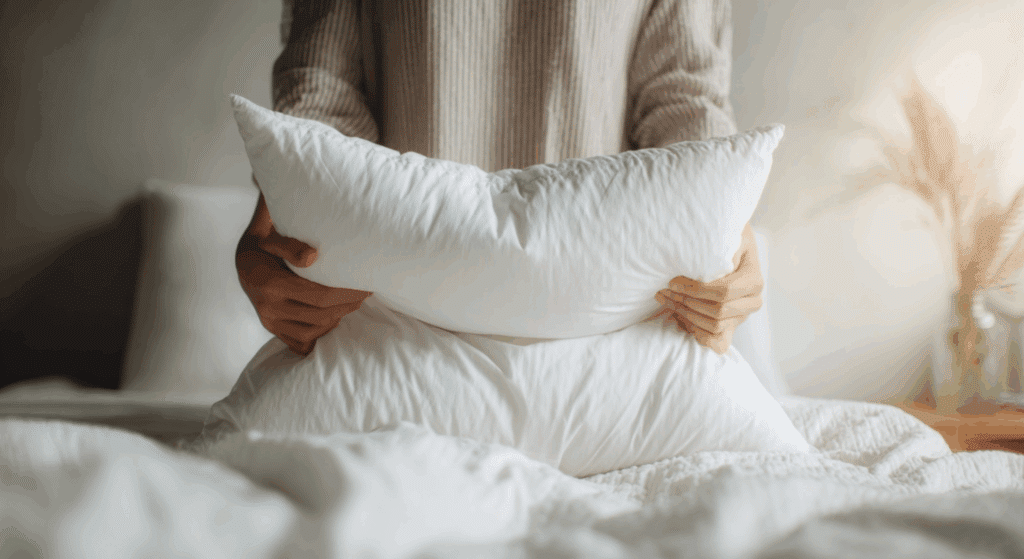
Hold each end of the pillow. Push the ends toward each other, then pull them apart. Do this again and again, like playing an accordion. Rotate the pillow 90 degrees and repeat.
This helps spread the filling inside evenly. Try it for about 30 to 60 seconds. It works best for soft pillows like down or fiberfill.
Tip: Turn the pillow as you go so it stays puffy all over.
2. Massage and Knead Out the Lumps
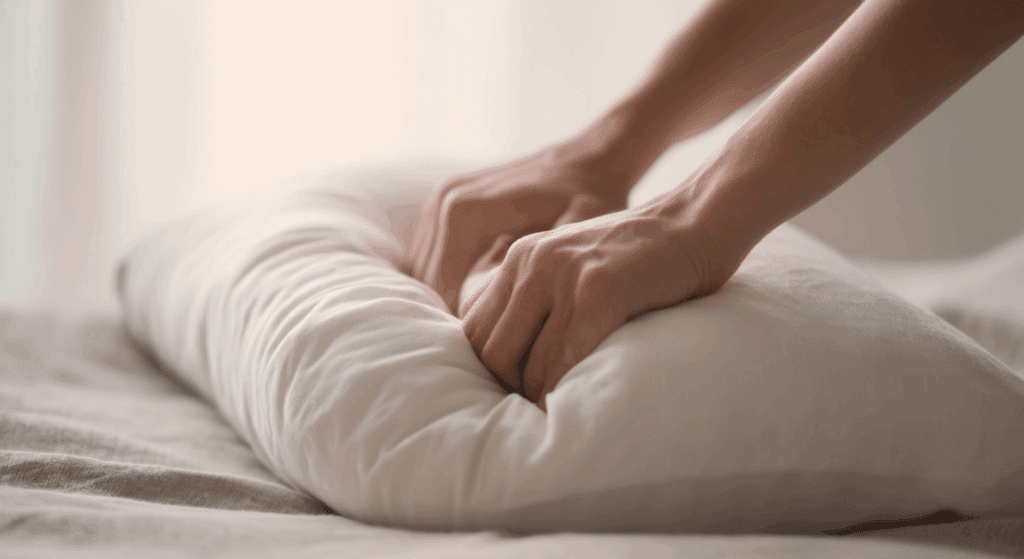
Use your fingers to press and roll the pillow like dough. Focus on any hard or bunched-up spots, especially in the corners.
This helps smooth out clumps and makes the pillow feel even again.
This method is great right after washing, when the fill often gets stuck in one place.
3. Pat, Punch, and Shake Technique
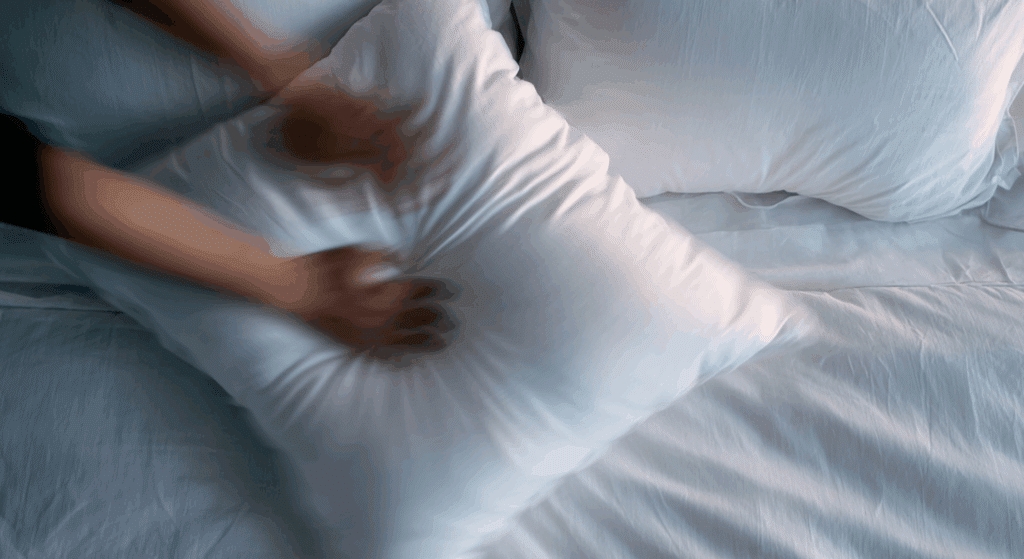
Give the pillow a few light punches in the middle. Then pat it all around. This helps move the fill back to where it belongs.
Hold the pillow and shake it up and down a few times. Air gets pulled in, and the pillow feels more bouncy.
It’s a fast way to fix a tired pillow after daily use.
4. Fluff a Pillow in the Dryer
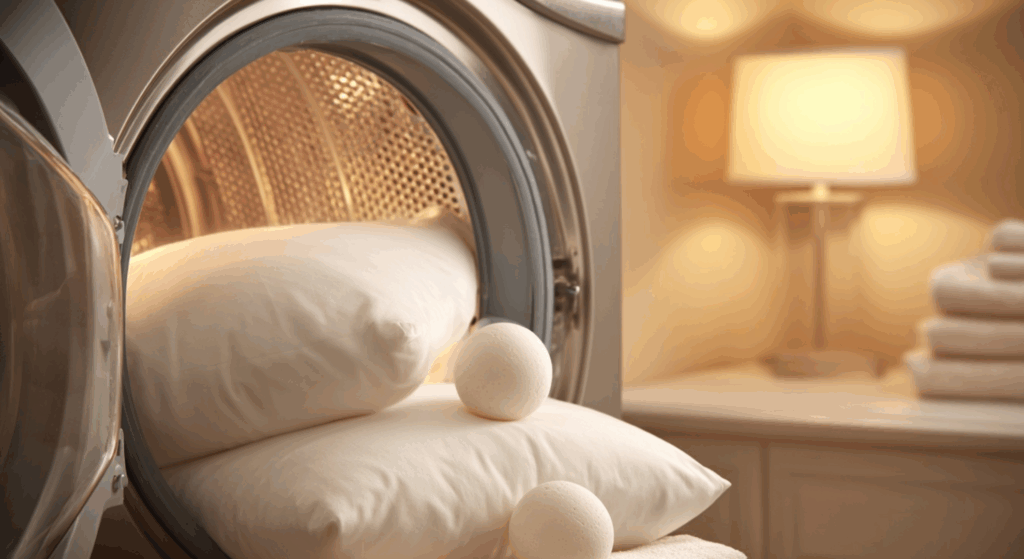
Set your dryer to air-fluff or use the low-heat setting.
Add two dryer balls or clean tennis balls to help break up lumps inside. Let it run for 10 to 15 minutes. Take the pillow out and reshape it by hand.
Tip: Throw in a dry towel. It helps absorb moisture and keeps the pillow from clumping.
5. Air It Out in the Sun (No Dryer Needed)
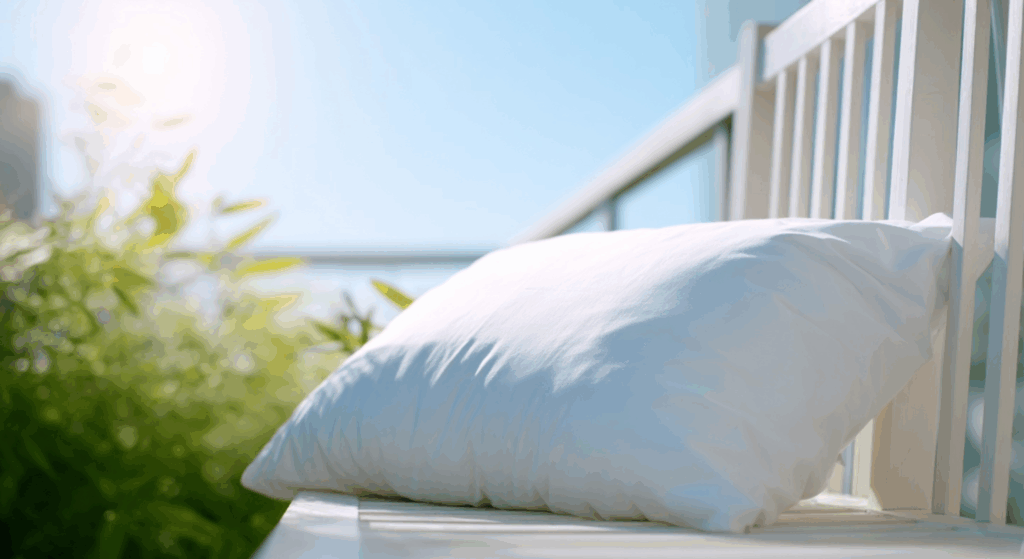
Wondering how to refluff a pillow without a dryer? Put the pillow outside in the sun for 2 to 3 hours. This helps dry out moisture that can weigh it down. Flip or shake the pillow halfway through so both sides air out.
Sunlight also kills smells and freshens the fill.
Great for: Memory foam or delicate pillows that can’t go in the dryer.
6. Refluff After Washing (Post-Wash Rescue)
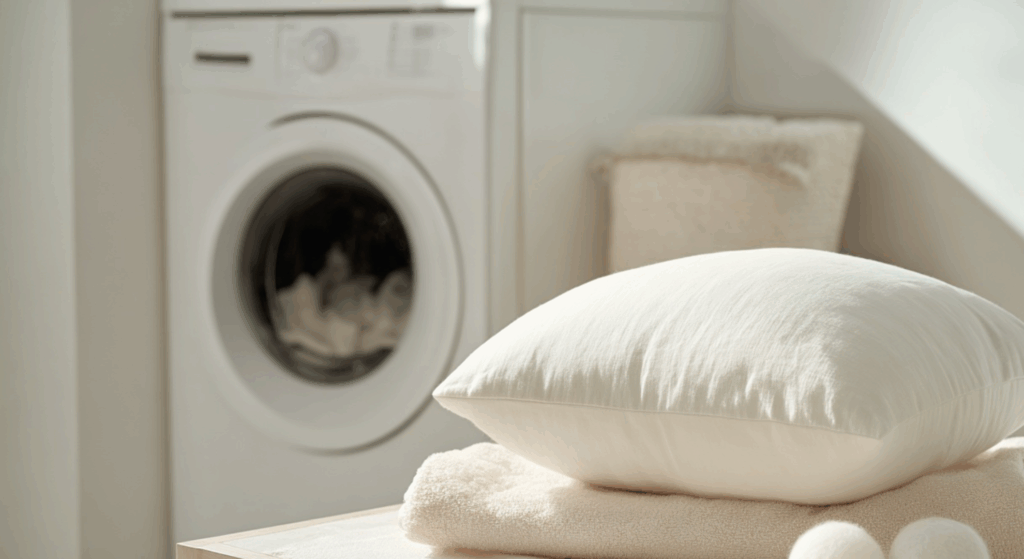
First, press out the water using a towel, but don’t twist or wring it. Put the pillow in the dryer on air-only (no heat) with dryer balls.
Run for 10–15 minutes at a time, then stop and break up any lumps by hand.
Care note: Down pillows take longer to dry. Foam pillows should only be air-dried to keep their shape.
When to Refluff vs. Replace Your Pillow
Sometimes a pillow just needs a little help. If it feels flat but bounces back after fluffing, it’s still good. Refluffing works well when the pillow is only slightly lumpy or has lost some shape. Try the hand, dryer, or sun methods first.
But if the pillow stays flat no matter what you do, it might be time to replace it. If you fold it in half and it doesn’t spring back, that’s a clear sign. Also, check for bad smells, stains, or if it causes neck pain; these mean the inside is worn out or too dirty to fix.
Most pillows last around 1 to 2 years. After that, the filling starts to break down, and refluffing won’t help much. So if your pillow still feels uncomfortable after trying all the fluffing tricks, it’s probably best to get a new one. Your neck and sleep quality will thank you.
How Pillow Type Affects Fluffing
Not all pillows are the same and that means they don’t fluff the same way either. The type of filling inside your pillow changes how you should care for it. Here’s how to handle the most common types:
Down and Feather Pillows: These are the easiest to fluff. Use the accordion method, punch and shake, or toss in the dryer. They bounce back well with regular care.
Polyester (Fiberfill) Pillows: Also easy to fluff. Hand fluffing and dryer methods work well. Just avoid high heat when drying.
Memory Foam Pillows: These don’t fluff like others. Instead of fluffing, focus on airing them out. Sunlight helps remove moisture and freshen them.
Latex Pillows: Like memory foam, they keep their shape. Don’t punch or squeeze them. Air-drying and gentle care is best.
Knowing your pillow type helps you treat it the right way, leading to better comfort and a longer life.
Simple Habits to Keep Pillows Fluffy Longer
You don’t need fancy tools to keep your pillows in good shape. A few easy habits can help them stay soft and full for much longer. Try adding these to your weekly or monthly routine:
- Fluff your pillow every morning after you get up
- Shake and turn it often to keep the filling spread out
- Use a pillow protector to block sweat and dirt
- Air it out in the sun every few weeks
- Wash pillows every 3–6 months (follow care tag)
- Dry them fully with dryer balls or on a line
- Store extras in a cool, dry place when not in use
These small habits don’t take much time, but they make a big difference. With a little care, your pillow can stay comfy and supportive for a long time.
Conclusion
I’ve found that keeping pillows fluffy doesn’t have to be hard. Once I learned how to fluff a pillow the right way, my sleep got better and my mornings felt easier.
It’s all about small habits, like shaking it out, using the dryer now and then, or giving it some sun. These little steps have helped me keep my pillows feeling like new for longer.
Now it’s your turn to try these methods. Start with one that fits your pillow type and see how it feels tonight. Remember, a few minutes of care can make a big difference. Keep an eye out for signs that it’s time to replace it, too.
And if you found this helpful, don’t stop here; check out other blogs on the website for more simple, clear tips on sleep and home comfort!


